It looks like you're using an Ad Blocker.
Please white-list or disable AboveTopSecret.com in your ad-blocking tool.
Thank you.
Some features of ATS will be disabled while you continue to use an ad-blocker.
5
share:
The programme, Ancient Voices, shows that the dimensions of prehistoric skulls found in Brazil match those of the aboriginal peoples of Australia and Melanesia. Other evidence suggests that these first Americans were later massacred by invaders from Asia.
news.bbc.co.uk...
An interesting vid but marred by racial typology however despite this short coming it raises the question of what do people mean when they say American Indians,for wouldn't the Australians be the de-facto first Indians? which in itself is a misnomer as..Indians live in India,the presumably late comer Northeast Asians are given the title Indian but the Australians remained Australians??..The vid also showed a cave painting of a high prowed boat in Australia meant for ocean going which turned out to be the oldest depiction of a boat anywhere in the world.
The Luiza find some years back had me reviewing my earlier stance that Africans were in the Americas as per some of the Olmec statues and paintings in other American civilizations,and I am less gun-ho about Spanish and Portuguese explorers finding Africans in the "New World" although they cannot be ruled out, what they may have chanced upon were Blacks but Australians the picture the vid painted was a brutal invasion by incoming Asian population that wiped them out but what if that's not exactly true either that while they became a minority in some cases they became a powerful minority within some Ancient American civilizations see (Olmecs) up to the time of the incoming Iberians.
Mods I did a search with key words but nothing popped up that matches this thread so I hope I am ok.
edit on 15-8-2013 by Spider879 because:
Add more info
reply to post by Spider879
Hey spider,
Am at work so didn't get a chance yet to watch vid, but will after work.
What I'd like to add is that what has been characterized as austrailian or African morphology by some writers when speaking paleoindians, is not entirely correct, it is archaic morphology, as typified by the Santa lago skulls, Luiza, and the pericue of Baja and most surprising to me the early yokuts of ca.
I have a paper describing the "tranquillity"burials and compares them with other paleo Indian skulls.
I'll try to track that link down, I also have it in pdf.
Hey spider,
Am at work so didn't get a chance yet to watch vid, but will after work.
What I'd like to add is that what has been characterized as austrailian or African morphology by some writers when speaking paleoindians, is not entirely correct, it is archaic morphology, as typified by the Santa lago skulls, Luiza, and the pericue of Baja and most surprising to me the early yokuts of ca.
I have a paper describing the "tranquillity"burials and compares them with other paleo Indian skulls.
I'll try to track that link down, I also have it in pdf.
Originally posted by punkinworks10
reply to post by Spider879
Hey spider,
Am at work so didn't get a chance yet to watch vid, but will after work.
What I'd like to add is that what has been characterized as austrailian or African morphology by some writers when speaking paleoindians, is not entirely correct, it is archaic morphology, as typified by the Santa lago skulls, Luiza, and the pericue of Baja and most surprising to me the early yokuts of ca.
I have a paper describing the "tranquillity"burials and compares them with other paleo Indian skulls.
I'll try to track that link down, I also have it in pdf.
Waay kool please share when you can but by all means check out the vid.
reply to post by Spider879
Here you go spider
www.sil.si.edu...
I'll try to find another paper detailing a skeletal morphology transition of paleo Indians in the great basin, from burials at spirit cave and another un- named site in Nevada.
The oldest layers have people whose skeletal morphology is termed caucasoidal, but transitions to a type more like the present day paiute. The most interesting thing is that they remain culturally consistent, ie theyafr the same baskets, tools and sandals.
See if you can find the homo erectus reference in the paper.
Here you go spider
www.sil.si.edu...
I'll try to find another paper detailing a skeletal morphology transition of paleo Indians in the great basin, from burials at spirit cave and another un- named site in Nevada.
The oldest layers have people whose skeletal morphology is termed caucasoidal, but transitions to a type more like the present day paiute. The most interesting thing is that they remain culturally consistent, ie theyafr the same baskets, tools and sandals.
See if you can find the homo erectus reference in the paper.
edit on 16-8-2013 by punkinworks10 because: (no reason given)
reply to post by Spider879
My main comment is that skull dimensions are a poor way to determine such things. Genetics are much better
My main comment is that skull dimensions are a poor way to determine such things. Genetics are much better
You could look up the Pedra Furada Archaeological sites, which indicates human occupation in the Americas even before the influx of humans across the
Bering bridge.
The evidences mostly point that the Pedra Furada Inhabitants came to the Americas from Australasia (i.e the forefathers of the Australasian aborigines]
Perhaps they would have clashes with cultures which had arrived at the continent sailing along the coast, perhaps the Ainu?
could be a possibility.
The evidences mostly point that the Pedra Furada Inhabitants came to the Americas from Australasia (i.e the forefathers of the Australasian aborigines]
Perhaps they would have clashes with cultures which had arrived at the continent sailing along the coast, perhaps the Ainu?
could be a possibility.
Originally posted by punkinworks10
reply to post by Spider879
Here you go spider
www.sil.si.edu...
I'll try to find another paper detailing a skeletal morphology transition of paleo Indians in the great basin, from burials at spirit cave and another un- named site in Nevada.
The oldest layers have people whose skeletal morphology is termed caucasoidal, but transitions to a type more like the present day paiute. The most interesting thing is that they remain culturally consistent, ie theyafr the same baskets, tools and sandals.
See if you can find the homo erectus reference in the paper.
edit on 16-8-2013 by punkinworks10 because: (no reason given)
Thanks Punkinworks will make good down time reading..also it may very well confirm what some early European explorers had to say about the Californians.
Larry Angel had some interesting views on the Levant and Turkey also.
I know we are not supposed to eye ball people and draw anthropological conclusions but when I visited Australia for the first time yrs back I was struck by how odd many of the local blacks appeared this was way before I knew what an archaic morphology was suppose to be, I immediately thought neanderthal survivors since you are a physical anthropology kinda person check this out when you have the time..www.ahnenkult.com... anthrocivitas.net...

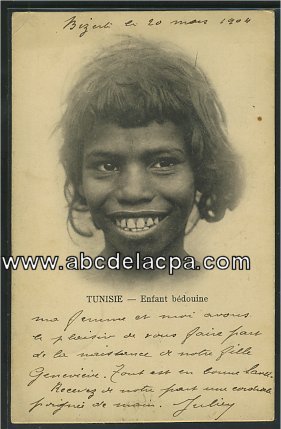

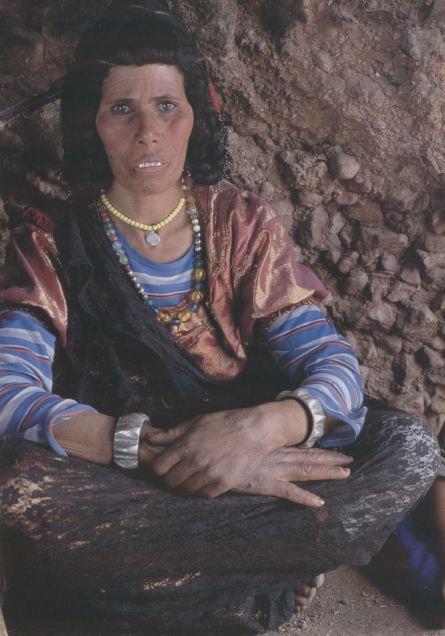
All the above are from North Africa Tunisia and Algeria I really was not expecting to find this morphology in Africa at all.
edit on
16-8-2013 by Spider879 because: (no reason given)
Originally posted by Noinden
reply to post by Spider879
My main comment is that skull dimensions are a poor way to determine such things. Genetics are much better
I agree but even better yet would be a multi-disciplined approach.
Originally posted by coredrill
You could look up the Pedra Furada Archaeological sites, which indicates human occupation in the Americas even before the influx of humans across the Bering bridge.
The evidences mostly point that the Pedra Furada Inhabitants came to the Americas from Australasia (i.e the forefathers of the Australasian aborigines]
Perhaps they would have clashes with cultures which had arrived at the continent sailing along the coast, perhaps the Ainu?
could be a possibility.
Yes that's position of the vid
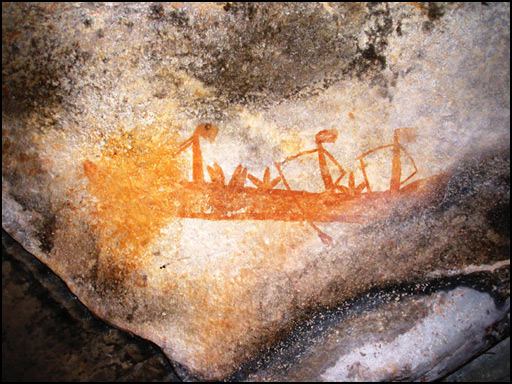
www.bradshawfoundation.com...
This is the boat in the vid which was said to be designed for ocean travel which is amazing given the age, this wasn't some put together bamboo raft that got swept out to sea.
I thought Kennewick Man was related to the Ainu,in any case they would come at a later date.
reply to post by Spider879
Hey spider,
Watched the bus, it's entertaining, even if it's a somewhat simplistic vision of that period.
The picture is far more complex, than that of just Australians and mongoloids.
Even a three wave model of new world population, doesn't fit what we see, in the archeology, the genetics, comparative mythology or linguistics.
In my previous post I negelcted to mention the the fuegans as one of those populations whose skulls have archaic features.
Hey spider,
Watched the bus, it's entertaining, even if it's a somewhat simplistic vision of that period.
The picture is far more complex, than that of just Australians and mongoloids.
Even a three wave model of new world population, doesn't fit what we see, in the archeology, the genetics, comparative mythology or linguistics.
In my previous post I negelcted to mention the the fuegans as one of those populations whose skulls have archaic features.
So check out this paper, sorry about converted format.
bandstex.globat.com...
Prehistoric Human Remains from Jalisco, Mexico
Joel D. Irish, Stanley D. Davis, John (Jack) E. Lobdell, and Frederico A. Sol'97rzano
The likelihood of a late-Pleistocene human presence in Jalisco, Mexico, is supported by culturally modified faunal bones, diagnostic lithics, and mineralized human bones; this report concerns the latter, which were analyzed by Irish, using standard osteol
ogical procedures (Bass 1981; Brothwell 1981; Ortner and Putschar 1985; Shipman et al. 1986; Ubelaker 1989; White 1991). All materials were recovered 50 km southeast of Guadalajara, in the Lake Chapala and Zacoalco Playa basins.
The human remains are thought to be of late-Pleistocene age based on faunal correlation. Many have been in Sol'97rzano
s possession for some time; others were recently collected. Like associated fauna, all are mineralized, dark in color, and fragmentary. We have a focus on their origins and will work to establish exact field proveniences in May 2000.
The Chapala bones (n = 10) have a MNI of three, based on two left superciliary arches (brow ridges) and a deciduous incisor. The super border of each brow is blunt, implying the sex was
male in both cases. However, size variations of other fragments suggest males and females are represented. The deciduous incisor is from a three-year-old; the rest represent young adults.
One Chapala superciliary arch deserves specific mention due to its large size. Studies by Sol'97rzano show the bone resembles that in archaic Homo sapiens at Arago, France. In an unpublished 1990 report, Texas A&M osteologists suggest the brow's thickness and robustness are comparable to those of KNM-ER 3733 (African Hom
o erectus). Our measurements show the central torus thickness is 13.3, compared with 8.5 mm for KNM-ER 3733; the lateral torus thickness is 11.5 versus 9.0 mm (Rightmire 1998). Thus for the sake of comparison, the brow is more like that of Zhoukoudian Skull XI (Asian Homo erectus), with a central torus thickness of 13.2 +/- mm; lateral torus thickness was not measured (Rightmire 1998). Modern brows are too diminutive to allow these measurements. The brow also shows pneumatization (air pockets) along its length.
However, to reiterate the findings of the Texas A&M workers, these comparisons do not imply that pre-Homo sapiens were in the Americas.
No phylogenetic or age implications are intended. Instead, the comparisons demonstrate the size relative to most
New World specimens, although brows on the Lagoa Santa skull (Bryan 1978) and on recent Tierra del Fuego and Patagonia crania (Lahr 1995; C.L. Brace pers. comm. 1998) appear comparable.
bandstex.globat.com...
edit on 17-8-2013 by punkinworks10 because: (no reason given)
I think what we are seeing here in this discussion of ancient morphology, is that both these early native Americans and the people of Oceana have
Comnin ancestry.
The Bradshaw rock art with the boat is VERY telling, but you have to look at all if the art.
The piece showing deer, in my mind, clearly shows that the people who painted the art are not from austrailia , but are arrivals to Australia from south east Asia, not Australians to SE Asia and back.
The dating of the Bradshaws, 17k?. bp, from a wasps nest that lies on top of a painting, is to new for them to have been a founding population.
But this dating profile fits generaly with know movements of people in island SE Asia and melanesia.
One thing to remember is that the people of melanesia have one of the highest percentages of denisovan DNA, and that certain tribes in SA, have the overall highest percentage of denisovan DNA.
Contrast that with the fact that certain NA tribes have the highest concentration of Neanderthal DNA.
The Bradshaw rock art with the boat is VERY telling, but you have to look at all if the art.
The piece showing deer, in my mind, clearly shows that the people who painted the art are not from austrailia , but are arrivals to Australia from south east Asia, not Australians to SE Asia and back.
The dating of the Bradshaws, 17k?. bp, from a wasps nest that lies on top of a painting, is to new for them to have been a founding population.
But this dating profile fits generaly with know movements of people in island SE Asia and melanesia.
One thing to remember is that the people of melanesia have one of the highest percentages of denisovan DNA, and that certain tribes in SA, have the overall highest percentage of denisovan DNA.
Contrast that with the fact that certain NA tribes have the highest concentration of Neanderthal DNA.
reply to post by Spider879
Your welcome,
Just to add a little , here is a yokut woman
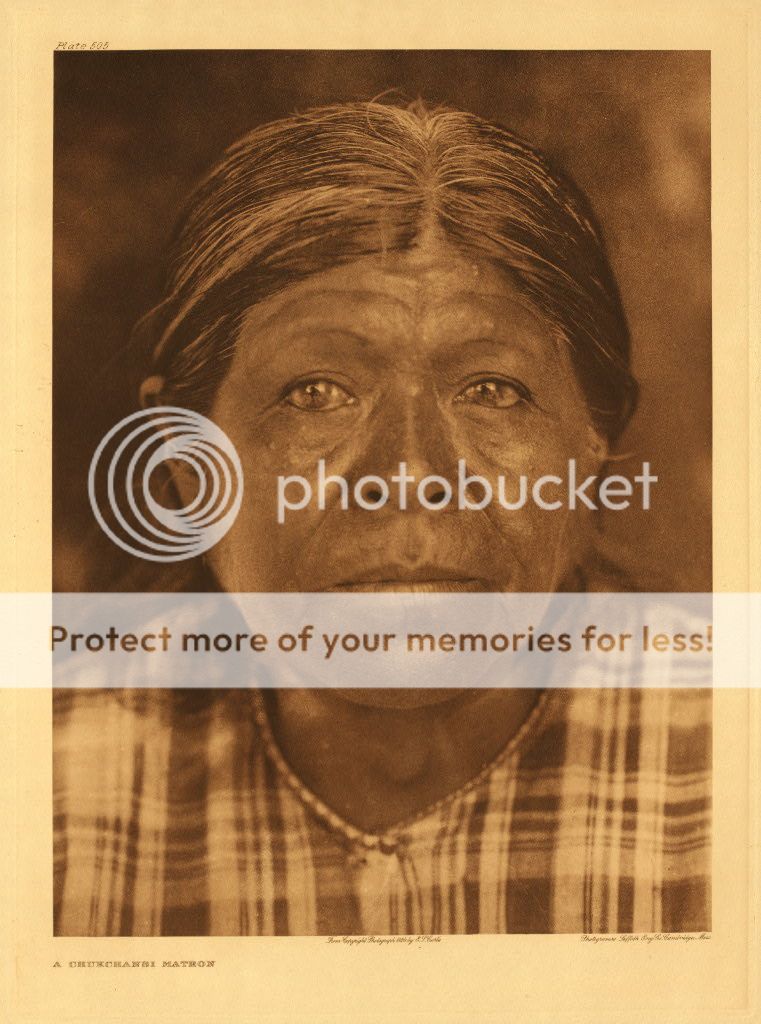
And a yokut reed canoe,
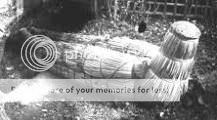
And of the central cal inland tribes the only ones to do rock painting are the yokuts, here is a yokuts cave rock painting

Your welcome,
Just to add a little , here is a yokut woman

And a yokut reed canoe,

And of the central cal inland tribes the only ones to do rock painting are the yokuts, here is a yokuts cave rock painting

new topics
-
VirginOfGrand says hello
Introductions: 43 minutes ago -
Should Biden Replace Harris With AOC On the 2024 Democrat Ticket?
2024 Elections: 1 hours ago -
University student disciplined after saying veganism is wrong and gender fluidity is stupid
Education and Media: 3 hours ago -
Geddy Lee in Conversation with Alex Lifeson - My Effin’ Life
People: 4 hours ago -
God lived as a Devil Dog.
Short Stories: 5 hours ago -
Police clash with St George’s Day protesters at central London rally
Social Issues and Civil Unrest: 6 hours ago -
TLDR post about ATS and why I love it and hope we all stay together somewhere
General Chit Chat: 7 hours ago -
Hate makes for strange bedfellows
US Political Madness: 9 hours ago
top topics
-
Hate makes for strange bedfellows
US Political Madness: 9 hours ago, 18 flags -
Who guards the guards
US Political Madness: 12 hours ago, 13 flags -
Police clash with St George’s Day protesters at central London rally
Social Issues and Civil Unrest: 6 hours ago, 8 flags -
TLDR post about ATS and why I love it and hope we all stay together somewhere
General Chit Chat: 7 hours ago, 6 flags -
University student disciplined after saying veganism is wrong and gender fluidity is stupid
Education and Media: 3 hours ago, 5 flags -
Should Biden Replace Harris With AOC On the 2024 Democrat Ticket?
2024 Elections: 1 hours ago, 4 flags -
Has Tesla manipulated data logs to cover up auto pilot crash?
Automotive Discussion: 14 hours ago, 2 flags -
Geddy Lee in Conversation with Alex Lifeson - My Effin’ Life
People: 4 hours ago, 2 flags -
God lived as a Devil Dog.
Short Stories: 5 hours ago, 2 flags -
VirginOfGrand says hello
Introductions: 43 minutes ago, 0 flags
active topics
-
Should Biden Replace Harris With AOC On the 2024 Democrat Ticket?
2024 Elections • 18 • : RazorV66 -
Gold and silver prices....woo hoo
History • 82 • : worldstarcountry -
Are you ready for the return of Jesus Christ? Have you been cleansed by His blood?
Religion, Faith, And Theology • 27 • : DiscipleOfChrist33 -
British TV Presenter Refuses To Use Guest's Preferred Pronouns
Education and Media • 119 • : WakeUpBeer -
Candidate TRUMP Now Has Crazy Judge JUAN MERCHAN After Him - The Stormy Daniels Hush-Money Case.
Political Conspiracies • 736 • : RazorV66 -
1980s Arcade
General Chit Chat • 23 • : McTech2 -
"We're All Hamas" Heard at Columbia University Protests
Social Issues and Civil Unrest • 260 • : Xtrozero -
They Killed Dr. Who for Good
Rant • 68 • : Lazy88 -
Terrifying Encounters With The Black Eyed Kids
Paranormal Studies • 67 • : daskakik -
House Overwhelmingly Passes Funding for Ukraine, Israel and Taiwan
US Political Madness • 61 • : Xtrozero
5
